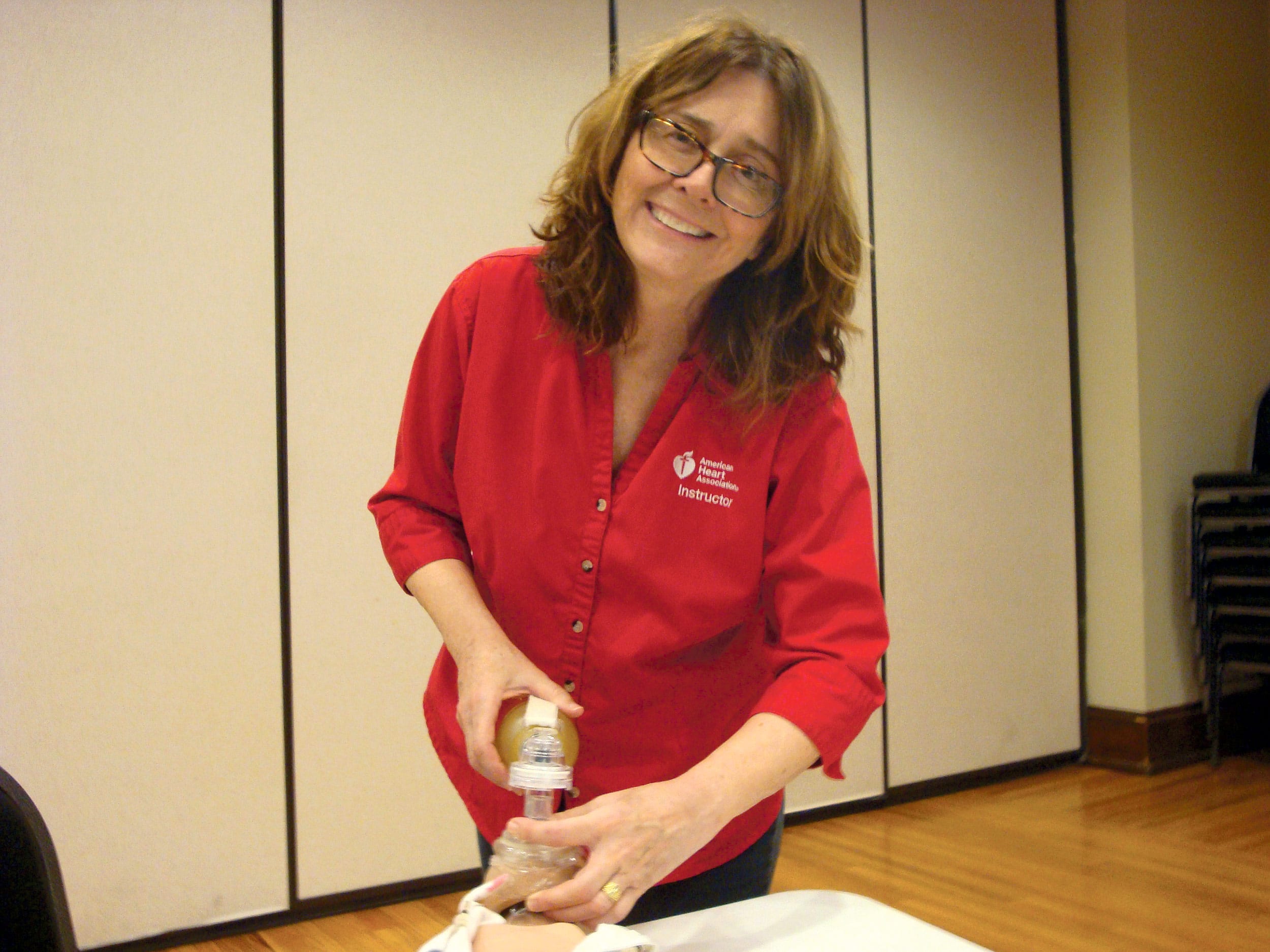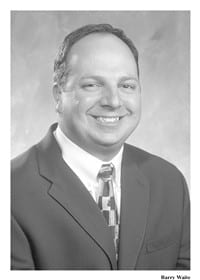Learning Curves – CPR Training Promotes Confident Approach in Critical Moment
Daily life can change in an instant. A child at dinner unexpectedly begins to choke on a piece of food, or an elderly parent suffers a sudden heart attack.
In these moments, someone who knows cardiopulmonary resuscitation (CPR) may just save a life.
That’s where Kim Webb and Gail Stathis can help. The two are certified Basic Life Support CPR instructors who began their careers as CPR trainers at Baystate Health. When their department was eliminated in 2011, they recognized the need for CPR instruction in the community and began offering their services independently as Kim and Gail’s CPR Plus.
These days, they train more than 2000 people a year, from medical professionals who are renewing their CPR certificates to individuals learning the life-saving techniques for the first time.
Webb and Stathis told HCN they approach every session with a philosophy of “stress-free and with a smile,” repeating this phrase on their business cards, website, and mission statement.
They decided on the stress-free approach after their experiences with CPR courses that involved strict, rigorous training and teachers who berated anyone who was less than perfect in class. Webb told the story of a recent course participant who said she cried the last time she took a CPR class because the instructor yelled at her.
“So she remembers the yelling and feeling scared, not CPR techniques,” said Webb, adding that she and Stathis have designed their course to encourage success rather than focus on mistakes. “If someone doesn’t get chest compressions right the first time, I’ll say, ‘let’s see if we can improve that while you’re here,’ and the next thing you know, ‘oh, look, the mannequin is lighting up; you’re doing a great job.’”
More than just a feel-good philosophy, Stathis said their relaxed approach to training gets results. “When participants are at ease and enjoying the class, the information has a better chance to sink in. Sometimes we inject humor, and that also helps people retain what they’ve learned.”
Entrepreneurial Course
For this issue’s focus on heart health, HCN talked with Webb and Stathis about their company, their methods, and the importance of everyone knowing CPR.
While they conduct many of their sessions at doctor’s and dentist’s offices, Webb and Stathis also hold classes at the Greek Cultural Center in Springfield for people who work in non-medical jobs such as construction, tree-trimming services, and fitness centers.
“There are a variety of professionals who are not in healthcare, but who need to have CPR training as part of their job,” said Webb. For most workers, CPR certification is valid for two years. Day-care providers in Massachusetts, however, have to recertify every year.
Webb and Stathis offer a Saturday session once every month for anyone who wants to learn CPR. According to the American Heart Assoc. (AHA), fewer than one in five adults have CPR training. The AHA is looking to see that percentage grow as it notes that 38 states have passed laws requiring CPR training to graduate high school. (While not required in Massachusetts, New England states that have this law include Vermont, Connecticut, and Rhode Island.)
As an approved training site of AHA, Kim and Gail’s CPR Plus keeps its courses current by employing the latest CPR techniques and approaches based on research findings from several leading health organizations.
Not surprising, one trend that has developed is a desire for quicker ways to learn CPR. Stathis said online classwork, almost non-existent five years ago, has become a growth area for the company. She estimated that nearly one-third of participants do some of their training online, while the other two-thirds prefer to be in the classroom for the entire course.
While an online component shortens the length of the course, classroom work with CPR mannequins is still required in order to be certified.
The hands-on approach is necessary, Stathis said, because most people are too gentle when learning chest compressions. By training on the mannequin, they can learn the proper techniques, because when someone has collapsed, only a fast and aggressive response will save them.
“You have four minutes to get on that chest and become that person’s external heart before their brain starts to die,” she said. “The goal is to buy time until higher-trained help comes along.”
An important technological development that’s buying time and saving lives is the automated external defibrillator (AED) found in public places such as schools, health clubs, and shopping malls. The AED is a small unit designed to jump-start the heart and looks more streamlined than the defibrillators most people have seen on TV shows, where doctors apply two large paddles to an unconscious patient.
With the device more readily available, instruction on how to use an AED is an important part of CPR training because it greatly increases a person’s chance of surviving a heart attack.
“If someone collapses in a mall and an AED is used to resuscitate them, they have about an 80{06cf2b9696b159f874511d23dbc893eb1ac83014175ed30550cfff22781411e5} chance of survival compared to CPR alone, which is about 5{06cf2b9696b159f874511d23dbc893eb1ac83014175ed30550cfff22781411e5},” Webb said.
Passing the Stress Test
There’s no doubt that performing CPR is a stressful event, even for the pros. But how about the stress-free approach to teaching CPR? Is that working?
Stathis said it is, noting that the partners often hear from people who have completed the course, enjoyed the experience, and have used their training to save a life.
Recently, Webb and Stathis heard from a local medical group about an elderly man who collapsed in their waiting room two days after CPR training. According to Stathis, “the person who sent the note said her team felt confident in saving the man because of the CPR class they had just taken and told us how grateful they were for our training.”
It’s an example, just one of many, of how their methods are generating results — for those taking their course, and, even more importantly, for those who might need CPR.




Comments are closed.